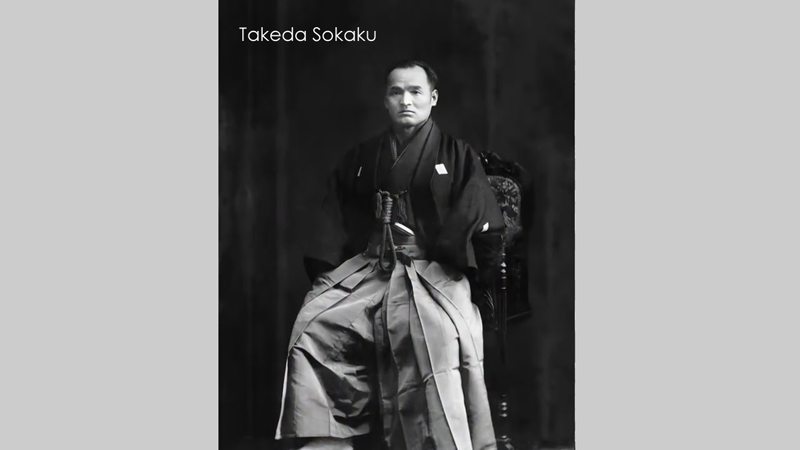shōmenuchi ikkyō (suwariwaza)
irimi and tenshin
in the exam for 2nd kyu
suwariwaza (座り技, techniques while sitting)
2020-03-19
irimi and tenshin
in the exam for 2nd kyu
suwariwaza (座り技, techniques while sitting)
hitoriwaza
in the exam for 1st kyu

Takeda Sōkaku (1859-1943) - Takeda is the surname - was a samurai of the Takeda clan and a well-known martial arts teacher in Japan.
He became known as a master of Daitō-ryū and as a teacher of Morihei Ueshiba, the founder of Aikidō.
As a result of the social and political upheavals in Japan, the samurai had lost their special status in 1876. Takeda earned his living by teaching unarmed self-defense techniques. Since samurai were no longer allowed to wear swords in public, there was a demand.
Takeda only taught individuals and not groups.
Aiki is an important principle in Daitō-ryū. According to his own understanding, Takeda described it like this: The secret of Aiki is to overpower the opponent at a glance and thus win without a fight.
The forerunners of the techniques practiced in aikido can often be found in Daitō-ryu, which from 1922 was called Daitō-ryū Aiki-jūjutsu 大東流合氣柔術.